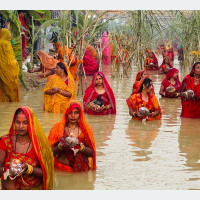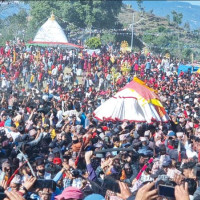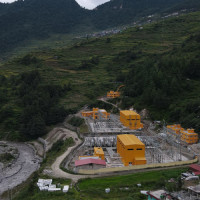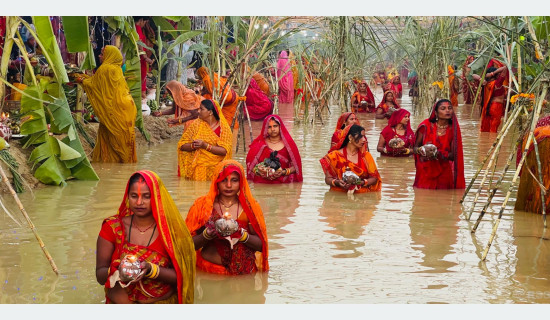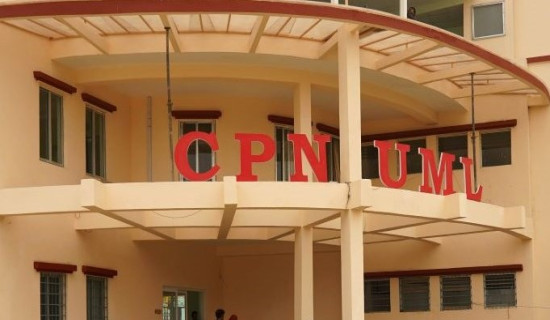- Friday, 8 November 2024
Chilime-Trishuli 220kV transmission line comes into operation
By A Staff Reporter
Kathmandu, Nov. 8: The Chilime-Trishuli 220 kV transmission line has come into operation since Wednesday evening, November 6.
Electricity was charged through the 28-kilometre line from the Chilime Hub Substation in Thambuchet in Aamachhodingmo Rural Municipality of Rasuwa district to the Trishuli 3B Hub Substation in Pahirebensi in Kispang Rural Municipality of Nuwakot district at 7:30 pm on Wednesday.
The Chilime Hub Substation, built as part of the Chilime-Trishuli 220 kV transmission line project, was also charged the same day. It is equipped with two 220/132 kV, 160 MVA transformers, providing a total capacity of 320 MVA, and a 132/33 kV, 50 MVA transformer. Likewise, the Trishuli 3B Hub Substation, with a 220 kV capacity, was already in operation, the Nepal Electricity Authority (NEA) informed in a statement on Thursday.
The Chilime-Trishuli 220 kV line which is capable of transmitting about 1,200 MW electricity was constructed to integrate electricity generated from various hydropower projects on the Trishuli River and its tributaries into the national grid. The project is developed with an estimated cost of Rs. 3.62 billion funded by the NEA and German grant, alongside a concessional loan from the European Investment Bank (EIB).
Tharka Bahadur Thapa, Director of the NEA’s High Voltage Grid Department, stated that the completion and operation of the transmission line and substations would enable immediate integration of electricity from hydropower projects in the region.
Initially, the Chilime Hub Substation will connect electricity from the 111 MW Rasuwagadhi, 42.5 MW Sanjen, and 14.8 MW Upper Sanjen hydropower projects. All these projects were developed under the leadership of Chilime Hydropower Company.
Rasuwagadhi and Sanjen are in the final stages of construction and power generation. The transmission line was completed with round-the-clock efforts from staff and contractors, even during the Dashain and Tihar holidays, according to the NEA.
The 28-kilometre line required 76 towers, spanning altitudes between 680 and 2,600 metres. Thirty-three towers had to be constructed in areas without road access, necessitating the building of over 20 kilometres of access roads and airlifting materials by helicopter.
The NEA said that the difficult terrain, steep cliffs, and absence of roads meant that construction materials, such as stones, sand, and water, often had to be transported by people or mules. Landslides, forest land use issues, local resistance, the COVID-19 pandemic and adverse weather in the mountainous and hilly areas further complicated the project.
A 1,235-metre section from Tiru to Siruchet in Uttargaya Rural Municipality-1 was strung using drones to cross the Mailung Khola, known as the Mailung Crossing. The Chilime-Mailung segment spans 20-kilometre with a double-circuit line, while the Mailung-Trishuli 3B Hub segment extends for 8-km with a multi-circuit line.
The multi-circuit line is being constructed to connect the 216 MW Upper Trishuli-1 project, led by Korean companies, with Upper Trishuli-1 covering 60 per cent of the cost. Construction of the project began in December 2017.




